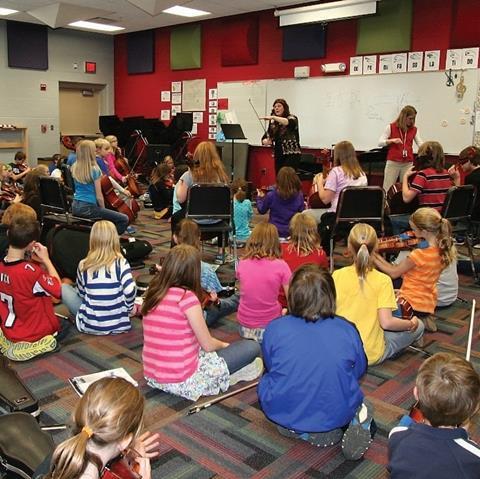Julie Lyonn Lieberman describes ways that electric instruments can inject energy into group learning sessions

The following article was published as part of a larger feature on Group Teaching Approaches in The Strad's June 2013 issue.
Most string players associate electric instruments with rock and pop music, but this misunderstanding can deprive them of some wonderful opportunities. The fact that an electric instrument’s volume can be set louder than that of acoustic ones can be an added help to teachers. One electric violin (a five-string will accommodate violists) and one electric cello can help save time, identify weaker players in group sessions, generate heightened ensemble interaction and provide an opportunity to feature players in an egalitarian manner.
Using a single electric instrument allows teachers to bypass stand-by-stand searches for any players who need extra support: they can simply pass the instrument around from one student to the next. Controlling the volume allows them quickly to determine who is speeding up or who is stumbling, and the sources of incorrect notes or rhythms, while simultaneously rehearsing the entire group.
Ensemble playing always improves when players learn the main melodic and rhythmic ideas of the other parts. Planting one electric instrument in each section in rehearsals enables players to hear the other sections’ parts clearly while they are playing together, thus preventing them from focusing on just their own part. A player from each section can also be invited to pick out and teach important lines from their part to the whole group using call and response. They could do this on an acoustic instrument, but using an electric one makes it more inviting and fun, and easier for everyone to hear – a great eartraining exercise. A few minutes per rehearsal can make a huge difference and will help switch players’ brain hierarchy from visual (looking at the music) to auditory (listening more deeply).
If the piece of music incorporates improvisation, the electric instruments can be set up at the front of the space or stage so that soloists can quickly move into place to play at the appropriate time. Even if the piece doesn’t allow for any improvisation at all, soloists can be challenged to use electric instruments to create a prologue, epilogue or even lines to accompany the written score.
This article was published as part of a larger feature on Group Teaching Approaches in The Strad's June 2013 issue.
Read: How to help a beginner pupil with intonation problems
Read: Are US instrumental teachers failing in their duties by being too nice?
Photo: Julie Lyonn Lieberman takes a young class in Decorah, Iowa











































1 Readers' comment